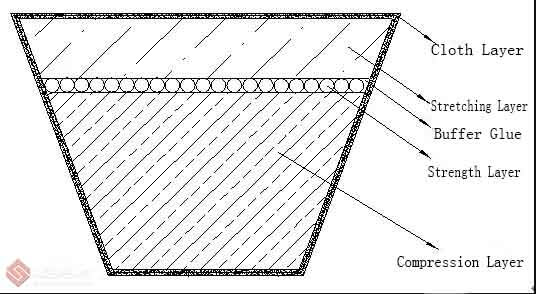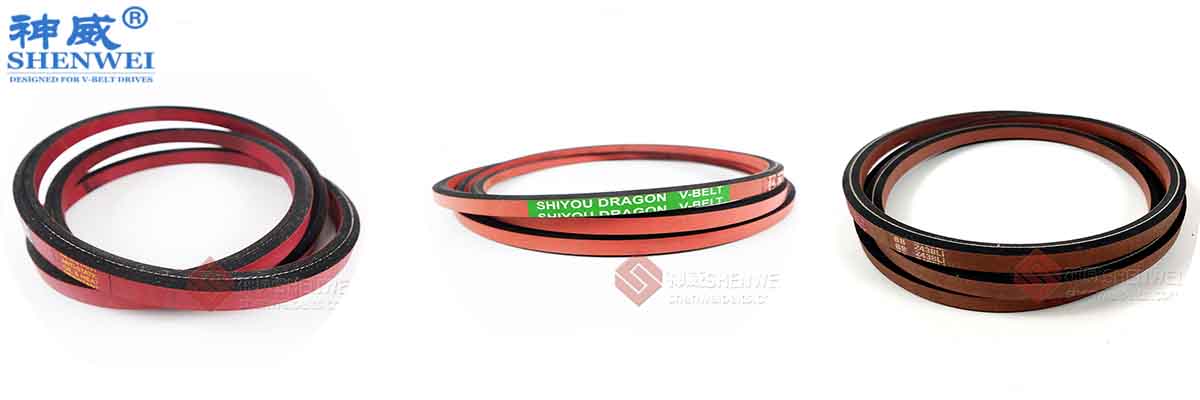The components and functions of the V-belt
The V-belt is generally considered to be only composed of rubber. Its main material is rubber, but its composition has multiple parts, such as the covering layer, the stretching layer, the strength layer, the buffer rubber, and the compression layer.
The role of the belt is different, so the rubber formula used is also different, so what role do these components play in the actual use of the V-belt?

1. Cloth layer:
Literally understand that its material is a kind of cloth, what kind of cloth is this? Plain rubber canvas, in popular terms, is the collective name of cotton canvas and striped cotton canvas. After this kind of cloth is made, it must be cut at an angle of 45° to be called a wrapping layer.
Because the cloth covering is made of cloth, it has good stretching and friction properties. Its existence can protect other parts from wear and corrosion, thereby enhancing the stiffness effect of the entire V-belt.
2. Stretching layer:
Its material is mainly rubber compound, which has better tensile properties and elasticity. During the operation of the V-belt, it is easy to generate tensile stress, and the tensile layer can withstand this tensile stress to protect the strength layer.
3. Strength layer:
Its material can be divided into different types such as polyester cord, polyester tempered brown silk, aramid cord, and dipped cord fabric. The strong screen is likened to the skeleton of the V-belt, because it is the part with the greater force in the operation of the entire V-belt.

4. Buffer glue:
The polyester tempered brown ribbon or the V-belt with the core of the cord is around the strength layer, and there is a layer of rubber with good adhesion strength with the core, which is the buffer rubber. The buffer rubber can fix the belt core. If the V-belt is running at a high speed, it will frequently deform and generate dynamic shear stress, which can be absorbed by the buffer rubber.
5. Compression layer:
The compression layer is composed of rubber with excellent bending resistance and fatigue performance. It can withstand the compressive stress generated by the V-belt during operation and bending, maintain the rigidity and elasticity of the V-belt, and increase the cross-section of the V-belt and the friction with the pulley. Contact surface to improve transmission efficiency.

 English
English Espanol
Espanol Pусский
Pусский Chinese
Chinese